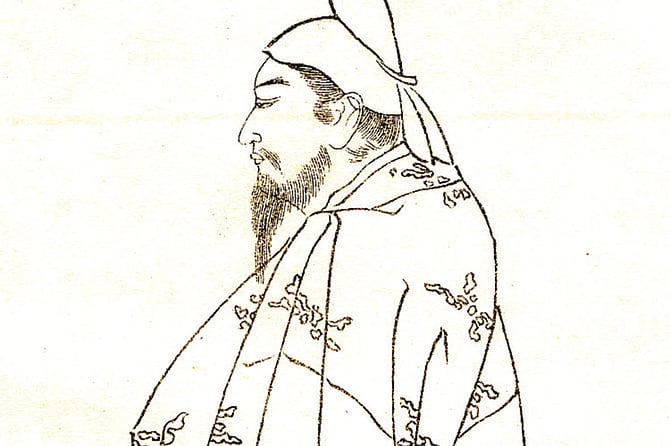 Facebook
Facebook
 X
X
 Instagram
Instagram
 TikTok
TikTok
 Youtube
Youtube

The Nihon Shoki
Izanagi and Izanami [i.e. “the divine primal pair”] stood on the floating bridge of Heaven, and held counsel together, saying: “Is there not a country beneath?” Thereupon they thrust down the jewel-spear of Heaven, and groping about therewith found the ocean. The brine which dripped from the point of the spear coagulated and became an island which received the name of Ono-goro-jima. The two Deities thereupon descended and dwelt in this island. Accordingly they wished to become husband and wife together, and to produce countries. So they made Ono-goro-jima the pillar of the center of the land. …Then [Izanagi] inquired of the female deity, saying: “In thy body is there aught formed?” She answered, and said: “In my body there is a place which is the source of femininity.” The male deity said: “In my body again there is a place which is the source of masculinity. I wish to unite this source-place of my body to the source-place of thy body.” Hereupon the male and female first became united as husband and wife….Hence first arose the designation of the Great Eight-island Country.
– from Nihon Shogi (“The Chronicles of Japan”)
The Nihon Shoki (also known as the Nihongi) is the second oldest work of Japanese history, predated only by the Kojiki (“Records of Ancient Matters”), compiled some 80 years earlier. More full of detail than the Kojiki, the Nihon Shoki has proven to be more reliable and therefore of greater value to historians and archeologists. The work was completed by Prince Toneri (676-735) with the help of Ō no Yasamuro (d. 723), compiler and perhaps composer of the Kojiki.


The Nihon Shoki
Izanagi and Izanami [i.e. “the divine primal pair”] stood on the floating bridge of Heaven, and held counsel together, saying: “Is there not a country beneath?” Thereupon they thrust down the jewel-spear of Heaven, and groping about therewith found the ocean. The brine which dripped from the point of the spear coagulated and became an island which received the name of Ono-goro-jima. The two Deities thereupon descended and dwelt in this island. Accordingly they wished to become husband and wife together, and to produce countries. So they made Ono-goro-jima the pillar of the center of the land. …Then [Izanagi] inquired of the female deity, saying: “In thy body is there aught formed?” She answered, and said: “In my body there is a place which is the source of femininity.” The male deity said: “In my body again there is a place which is the source of masculinity. I wish to unite this source-place of my body to the source-place of thy body.” Hereupon the male and female first became united as husband and wife….Hence first arose the designation of the Great Eight-island Country.
– from Nihon Shogi (“The Chronicles of Japan”)
The Nihon Shoki (also known as the Nihongi) is the second oldest work of Japanese history, predated only by the Kojiki (“Records of Ancient Matters”), compiled some 80 years earlier. More full of detail than the Kojiki, the Nihon Shoki has proven to be more reliable and therefore of greater value to historians and archeologists. The work was completed by Prince Toneri (676-735) with the help of Ō no Yasamuro (d. 723), compiler and perhaps composer of the Kojiki.
Comments